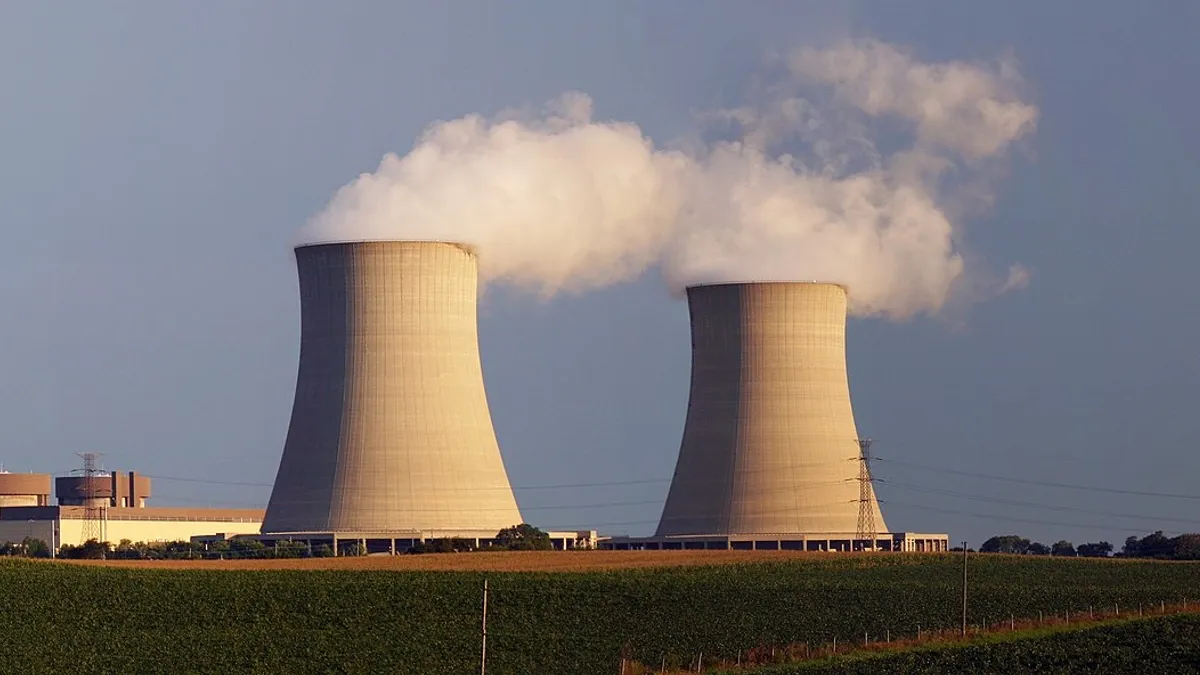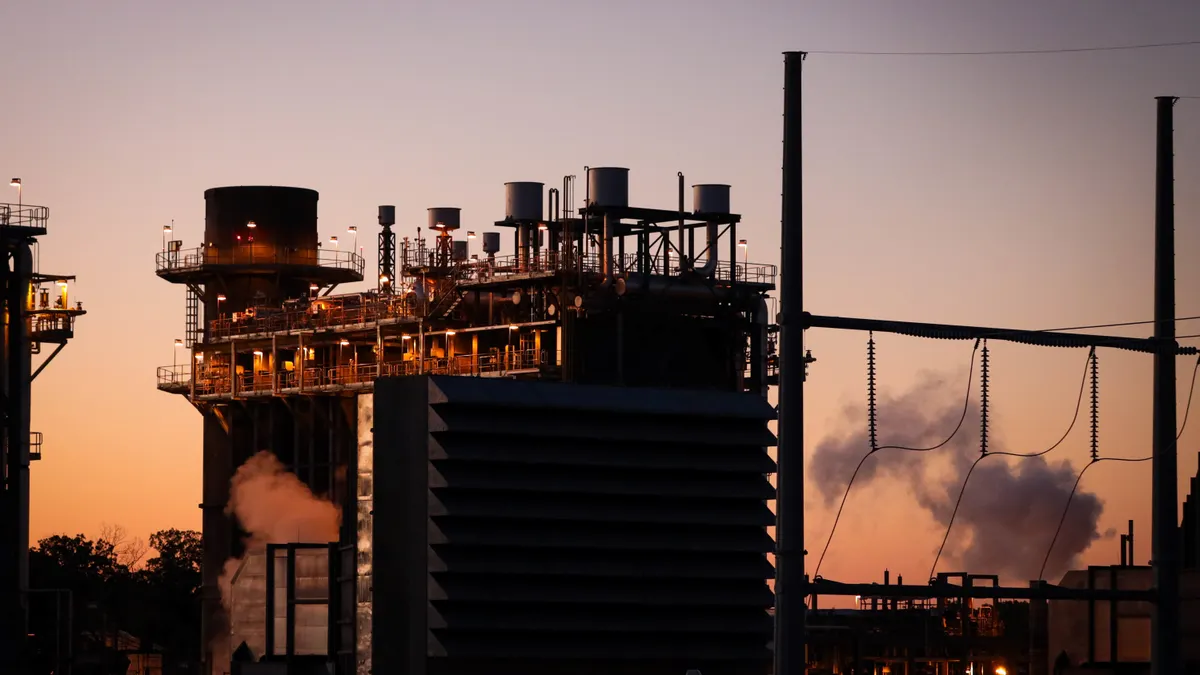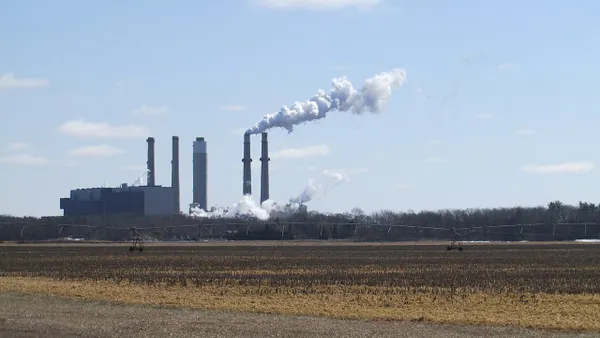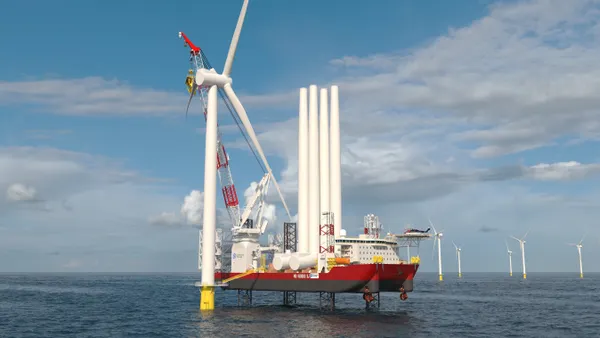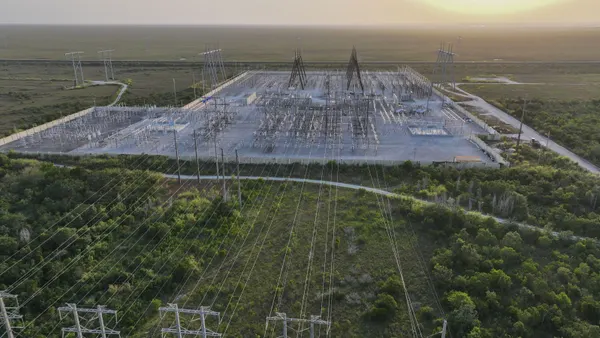Dive Brief:
- The U.S. Nuclear Regulatory Commission is “working as hard as we can” to roll out fresh guidance for component testing in nuclear power plants in the coming months, Tom Scarborough, a senior engineer with the NRC, said in an interview this month.
- The guidance is based on a flexible, conditions-based “in-service testing” code developed by the American Society of Mechanical Engineers for use in next-generation nuclear reactors. Steven Unikewicz, the top engineer for TerraPower’s Natrium reactor, said in an interview that the standard could cut field testing workloads by 75% without compromising safety.
- ASME says the “flexible structure” of its 83-page OM-2 code “also makes it applicable to non-nuclear facilities” — such as gas-fired power plants — “that require dependable mechanical component performance.”
Dive Insight:
OM-2 details in-service testing requirements for components like pumps, valves and dynamic restraints in advanced nuclear reactors and small modular reactors, ASME says.
The New York-based global standards nonprofit published OM-2 in late 2024 after a roughly two-year development process. NRC’s forthcoming regulatory guidance will incorporate it and another recent ASME code for “active mechanical equipment” in nuclear facilities, ensuring advanced reactor developers and the NRC work off a common set of standards during licensing activities.
ASME says OM-2 draws on “decades of experience with existing nuclear fleets.” ASME’s older OM standard, last updated in 2022, lays out in-service testing requirements for similar components in the large water-cooled reactors that compose the entirety of the operating U.S. nuclear fleet — as well as the small water-cooled reactors that nuclear technology companies like NuScale, and utilities like the Tennessee Valley Authority, hope to deploy at scale in the next decade.
But many next-generation reactor designs use coolants other than water. Liquid sodium cools the core of TerraPower’s Natrium reactor, the first commercial deployment of which began construction last year in Wyoming. Another TerraPower design uses molten salt as a coolant, as does Kairos Power’s Hermes reactor. X-energy’s Xe-100 reactor uses inert gas.
These “Generation IV” reactors can operate at higher temperatures than their water-cooled predecessors, opening up a host of use cases beyond conventional power generation. Many also operate at lower pressures and have passive safety systems that experts say make them less vulnerable to serious mishaps.
Most important from an operations and maintenance perspective, non-water reactors may have a different mix of components than conventional reactors, said Kate Hyam, ASME’s director of nuclear, clean energy, power and facilities codes and standards.
As early work progressed on Gen IV designs, the industry realized that “some testing that would be required by the existing standard would not be necessary [in advanced reactors] because those components don’t exist,” Hyam said. “We needed to restructure the standard to be ready for any emerging technology.”
As advanced reactor developers lined up to engage with the NRC earlier this decade, that task took on some urgency. ASME convened a working group on the standard in January 2022, had a final draft in May of last year and published the standard the following October, Scarborough said.
“That was probably a world record for issuing a code” under ASME’s consensus-based committee process, he said.
Scarborough was closely involved in that process, as were Unikewicz and engineers from other advanced reactor developers, GE Hitachi and Westinghouse. The result was a more flexible, less proscriptive standard that Hyam described as performance- rather than component-based.
“The question we asked was, if we had to do it right the first time, how would we do it?” Unikewicz said.
OM-2 came out so well that ASME is revising its original OM code along similar lines, Unikewicz added. That could make operations and maintenance more efficient in conventional nuclear power plants. He said that process could wrap up in 2027.
“Without hesitation, this will be a net benefit for all of us,” he said.


